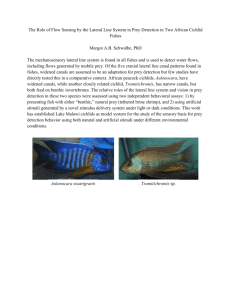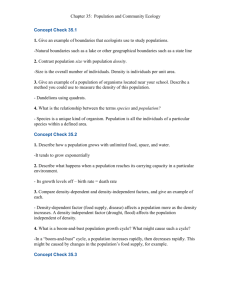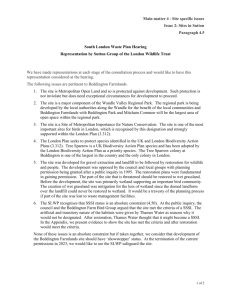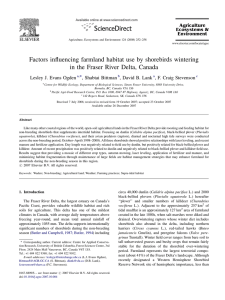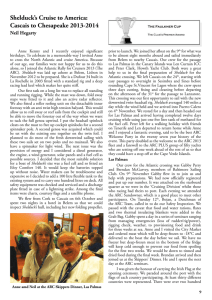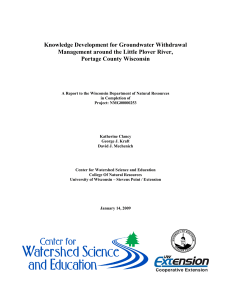Impact of nutrient loadings on coastal food chains
advertisement
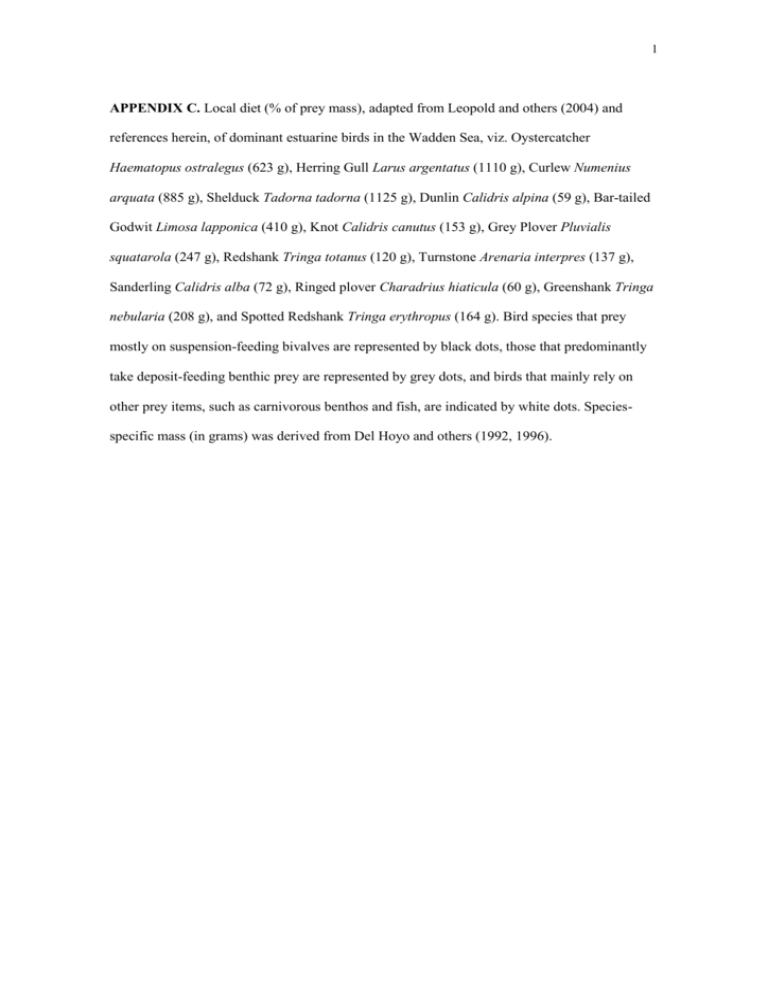
1 APPENDIX C. Local diet (% of prey mass), adapted from Leopold and others (2004) and references herein, of dominant estuarine birds in the Wadden Sea, viz. Oystercatcher Haematopus ostralegus (623 g), Herring Gull Larus argentatus (1110 g), Curlew Numenius arquata (885 g), Shelduck Tadorna tadorna (1125 g), Dunlin Calidris alpina (59 g), Bar-tailed Godwit Limosa lapponica (410 g), Knot Calidris canutus (153 g), Grey Plover Pluvialis squatarola (247 g), Redshank Tringa totanus (120 g), Turnstone Arenaria interpres (137 g), Sanderling Calidris alba (72 g), Ringed plover Charadrius hiaticula (60 g), Greenshank Tringa nebularia (208 g), and Spotted Redshank Tringa erythropus (164 g). Bird species that prey mostly on suspension-feeding bivalves are represented by black dots, those that predominantly take deposit-feeding benthic prey are represented by grey dots, and birds that mainly rely on other prey items, such as carnivorous benthos and fish, are indicated by white dots. Speciesspecific mass (in grams) was derived from Del Hoyo and others (1992, 1996). 2 Suspension-feeding prey Oystercatcher Herring Gull 50% 50% Turnstone Knot Shelduck Grey Plover & Sanderling Curlew Dunlin Redshank Bar-tailed Godwit Ringed Plover 50% Deposit-feeding and mixed-feeding prey Spotted Redshank Greenshank Other prey items Supplementary FigureC1 (Philippart et al.)






